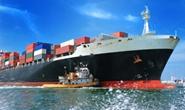Shipping and Logistics

Baltic Dry Index Hits 30-Year Low
Written by Sandy Williams
March 14, 2015
The Baltic Dry Index hit a thirty-year low on February 23 registering a reading of 512. As of March 11 the index increased to a still dismal 565. The Index tracks shipping rates for dry bulk cargoes like iron ore, coal and grain and is considered a barometer for global steel trade.
The MID-SHIP Group has been reporting for several months that part of rate weakness in the shipping market is an oversupply of ships. In the March 11 Report, MID-SHIP noted that orders for new bulk carriers have fallen off and are likely to continue that trend for the next year or two. MID-SHIP suggests that despite an economic slowdown in China and generally sluggish global growth, the reduced supply of new ships and an increase in scrapping along with slowly growing demand “just might be enough to slowly raise rates as we venture through 2016/17 and 18.”
Four miles of the Houston Ship Channel were closed for a few days last week due to a collision between a tanker and bulk carrier. A breach in the tankers cargo hold of MTBE, a gasoline oxygenator additive, leaked unknown quantities of the chemical into the channel. The Barbours Cut Terminal at the Port of Houston was closed as a result of the collision and the salvage efforts to recover the carrier’s anchor.
West Coast ports are working through backlogs of containers following the slowdowns related to the ILWU/PMA contract negotiations. East Coast and Gulf ports are seeing higher volumes as shippers divert imports from the West Coast.
Warmer weather has caused high river levels and ice jams on the Ohio and Illinois River. The influx of water to the Mississippi is likely to result in high water regulations in Baton Rouge. Dense fog due to warmer water temperatures has delayed deep and shallow water navigation all along the Gulf Coast, reports MID-SHIP. Vessels are anchoring to await berth availability.
Rail freight volume increased 2.8 percent in the first 8 weeks of 2015 according the Assocition of American Railroads.
Tight truck capacity is expected to cause rate increases of 3-5 percent in 2015. MID-SHIP quotes Stifel & Nicholaus transportation expert John Larkin, in address to the Truckload Carriers Association, as saying the “mother of all capacity shortages will appear during the 2017 to 2019 time frame, when all those regulations go into effect and customers will have pay up more dearly for your services.” MID-SHIP warns that 75 percent of all goods are shipped via truck carriers and a capacity crunch could constrain economic growth.
Diesel fuel increase slowed to national average of $2.944 last week. Surcharges of $.40 to $.42 per one way mile can be expected.

Sandy Williams
Read more from Sandy WilliamsLatest in Shipping and Logistics

US Great Lakes iron ore cargoes down notably through May
The Lake Carriers' Association reported a considerable decline in monthly iron ore shipments from US ports on the Great Lakes.

Wittbecker: West Coast port congestion
What's going on in West Coast ports?

Wittbecker: Mexico invests in port capacity despite US tariff troubles
The Mexican government aims to transform Manzanillo into the largest seaport in Latin America, capable of processing some 10 million TEU (20-foot equivalent units) per year by 2030. It is already Mexico's largest port and the third largest in Latin America, handling nearly 4 million 20-foot containers in 2024.

Wittbecker on Aluminum: When do the tariffs reach Main Street?
Containers sailing from China in April are down 15%-20% and Hapag Lloyd says their future bookings transpacific are down 30%.

Wittbecker on Aluminum: US-China trade war clobbers cross-Pacific trade
Container shipping lines have sharply increased blank sailings on Transpacific routes in response to escalating trade tensions between the US and China.
